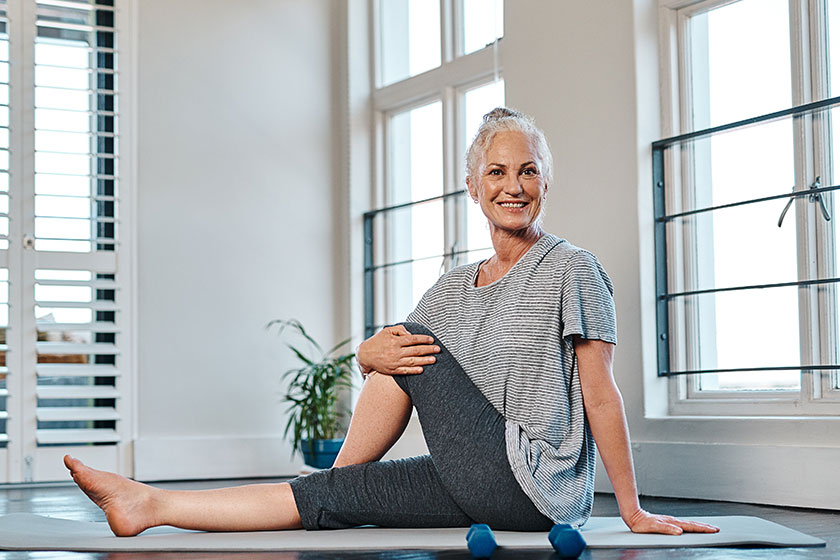As we venture into the golden years of our lives, especially for those considering the supportive environment of senior living communities, maintaining physical balance becomes a cornerstone of health and independence. Senior balance isn’t just about preventing falls; it’s about instilling confidence, enhancing mobility, and fostering a sense of autonomy. With age, natural changes in our muscles and joints, combined with potential health issues, can compromise balance. However, with regular, targeted exercises, individuals can mitigate these effects, ensuring they navigate their surroundings safely and confidently.
Embracing the Significance of Senior Balance
Stepping into the golden era of our lives brings with it a myriad of changes, both thrilling and challenging. For many, especially those eyeing the camaraderie and support of senior living communities, an often overlooked aspect is the preservation of physical balance. But why is senior balance so critical? It goes beyond merely preventing the occasional stumble or fall. Balance is intertwined with one’s self-confidence, the ease of daily mobility, and the zest for independent living. As we age, the natural wear and tear on our muscles, coupled with potential ailments or the side effects of medications, can pose a threat to our stability. The good news is that age doesn’t have to dictate our balance. Through targeted exercises and conscious effort, individuals can combat the declining balance that often comes with age, ensuring they not only move safely but also exude confidence in every step.
The Science Behind Balance in the Elderly
When we talk about balance, it is not just about standing upright or walking without faltering. It’s a complex coordination between various systems within our body. At its core, balance involves three primary systems: the vestibular system in our inner ear, our visual inputs, and proprioception. As years add on, our vision might not be as sharp, the vestibular system may experience changes, and our proprioceptive sensitivity might diminish. Muscular atrophy, joint stiffness, or even certain conditions like diabetes can further challenge our balance. However, the silver lining lies in adaptability. The human body, even in its senior years, is remarkably adaptable. Contemporary research sheds light on the positive impact of balance-centric physical activities on senior stability. Regular engagement in such exercises not only improves balance but drastically reduces fall risks, ensuring the elderly lead a vibrant, active life with fewer concerns about mobility challenges.
Enhancing Leg Strength and Flexibility
The potency of one’s leg muscles plays a pivotal role in overall stability. A decline in leg muscle strength can render tasks, like regaining composure after a misstep or traversing irregular terrains, notably challenging. Integrating exercises such as seated marches, mild squats, or ankle flexions into one’s routine can substantially bolster leg muscle strength. Beyond just strength, ensuring agility is equally vital. By dedicating time to flexibility exercises and consistent stretching, individuals can achieve more fluid motions and optimize joint functionality. Both these aspects are instrumental in upholding and enhancing balance as one navigates daily activities.
Utilizing Balance Specific Exercises
Emphasizing muscle fortification is undeniably important, but integrating exercises explicitly designed for enhancing balance is of equal significance. Such exercises might include routines like heel-toe walking. In this activity, participants aim to walk linearly, positioning the heel of one foot immediately preceding the toes of its counterpart. Another effective technique is the single-leg stand. Initially, participants can rely on a support product, like holding onto a chair. Over time, as confidence and balance improve, they can challenge themselves by attempting to stand without any aid. These targeted exercises, when practiced consistently, can work wonders in augmenting overall stability and balance.
Consistent Practice and Safety
Enhancing senior balance hinges on consistent effort and commitment. Engaging in regular exercises, even if only for short durations daily, can gradually culminate in tangible improvements in balance and stability. Nonetheless, paramount in this endeavor is the emphasis on safety. Before embarking on any new physical activity or regimen, it’s crucial to seek the advice of healthcare experts or physical therapists. These professionals can offer insights and recommendations specifically aligned with individual health profiles and unique requirements. Additionally, during the execution of balance exercises, it’s advisable to have a robust chair or a trusted individual close at hand, acting as a safeguard against potential mishaps.
The importance of maintaining balance in the senior years cannot be overstated. For those residing in or considering joining senior living communities, balance means more than just physical stability; it signifies confidence, autonomy, and an enhanced quality of life. By understanding the science behind balance, focusing on core and leg strength, and incorporating balance-specific exercises with consistency and caution, the elderly can navigate their surroundings with ease, reducing the risk of falls and ensuring a more active and fulfilling life.







